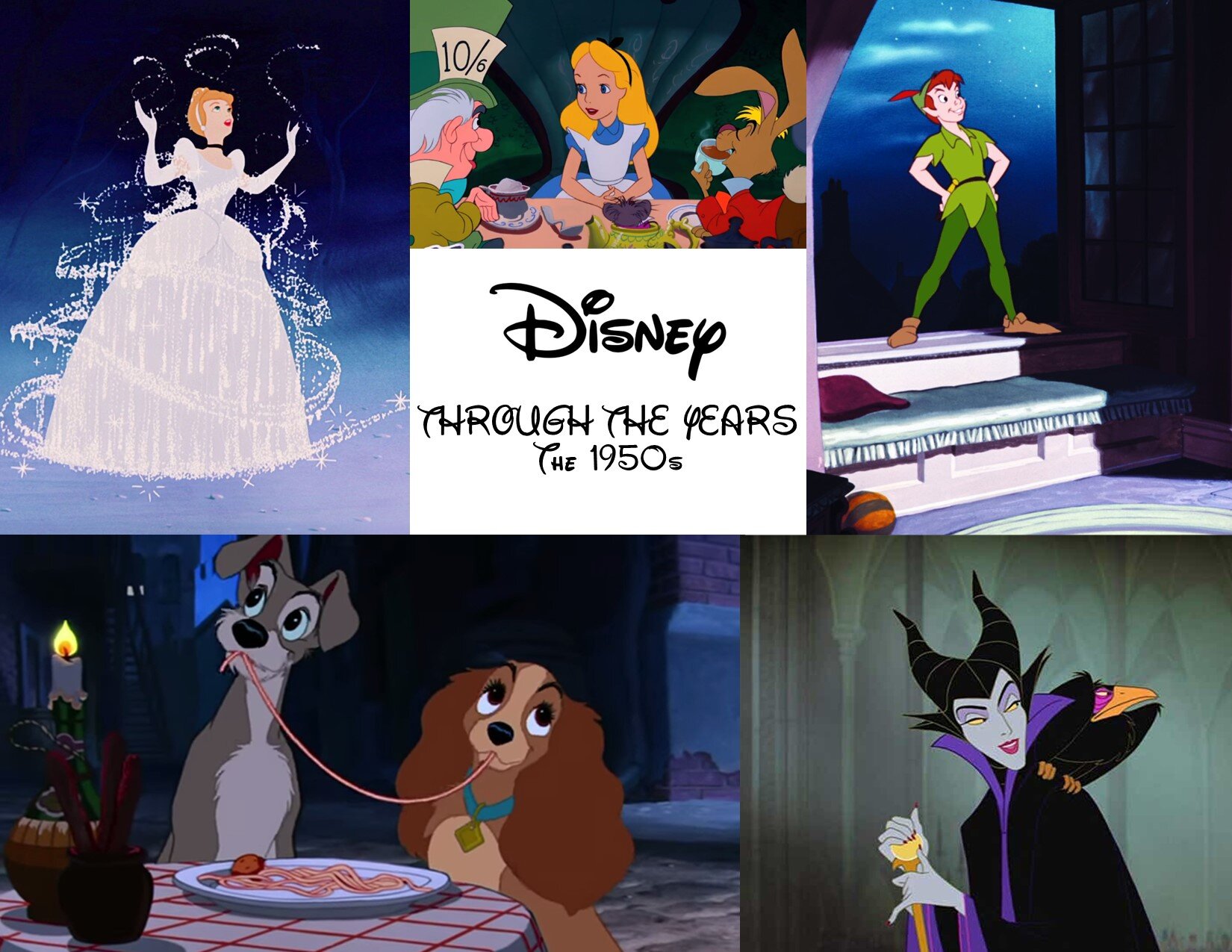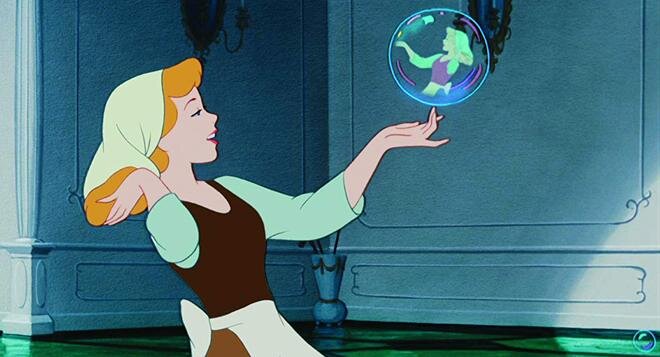Disney Through the Years - The 1950s: The Animated Features
Welcome to the third of many parts to a series of feature articles I’ll be doing in 2021.
Every month this year I am going decade-by-decade through the history of Walt Disney Company’s feature films. I will review each film from Walt Disney Animation Studios and rank them. Starting this month, I’ll be doing an additional feature in the series that will focus on every live action film by Walt Disney Pictures. So, there will be two features each month from here on out. This is the first and its focus is on the animated movies of the 1950s.
For more details on what is and isn’t included in this series be sure to check out the first entry that introduces the series.
In this entry, I’ll be reviewing the five animated movies Disney produced in the 1950s that are available on Disney+. Remember: you can follow along on Disney+ by going to the Search tab and selecting “Disney Through the Years” in the collections below the search bar.
Cinderella (1950)
After a couple of the anthology films of the 1940s made money Walt thought it would be a good idea long-term for the studio to get back to work on a feature-length story. He thought the stories they were already developing - Alice in Wonderland and Peter Pan - didn’t have the warmth needed for a return to form. Even though there was an actual production race between animation teams (Alice in Wonderland and Cinderella), it seemed a fairy tale akin to Snow White was most appropriate at that time, so they settled on Cinderella as the next film. At this point, the studio had knocked out 1/4 of its debt and since the European market was back open, Walt was confident that this project (if not the next one) would certainly knock out the rest of their debt and put them way back on the black end of the ledger.
So, Cinderella, as you probably know, is the fairy tale based on the Charles Perrault story. It’s about a young lady who is subjugated by and made subservient to her stepmother and stepsisters. The three of them get to live a privileged life Cinderella’s father left behind when he died while she is left to sleep in a tower and work all day every day cleaning the place and doing their bidding. That is, until one magical night that leads to a dance with the Prince.
So, Cinderella is a lot like Snow White in that she has a great relationship with animals and is rejected or slighted by her stepmother. Cinderella even saves a mouse (Gus) from a trap. The mice in this film, primarily represented by two male mice Jaq and Gus, are the heroine’s animal sidekicks. Cinderella picks up this tradition that was carried by Dumbo and Bambi, but is the first since Pinocchio where the protagonist is not also an animal. We’d see this dynamic repeated many times in future Disney animated movies.
The stepmother, Lady Tremaine, owns a cat named Lucifer. Lucifer is the first fully-developed villain animal sidekick and gets a lot of screen time. As a matter of fact, in part because of some cat-and-mouse antics between Lucifer, Jaq, and Gus, all that happens in the first 20 minutes of the film’s plot is Cinderella wakes up and feeds the animals on the property. The scenes between the cat and mice create a lot of padding in the plot, actually, and are what makes Cinderella a feature-length film. That being said, their scenes are the best parts of the film and are often more enjoyable than whatever is going on between Cinderella and the rest of her family.
The monotony of the main plot is also broken up by the sudden, out-of-the-blue appearance of Cinderella’s Fairy Godmother. This is the moment most people remember and delight in the film. However, the film actually has no set up for such a scene to take place even after 43 minutes. Everything between Cinderella and her family seems to exist in a sort of grounded reality that is without magic or the like. So, while ‘Bibbidi-Bobbidi-Boo’ is, by far, the best song in the film, the scene in which it exists is completely let down by having no set up beforehand. And yet, the rest of the story requires it, as it is the glass slipper that allows Cinderella to be identified later on and have a happy ending.
And as for that happy ending, it’s nice that Cinderella, when she goes to the ball the king is hosting in order for his son to meet someone he’d like to get hitched and have babies with, has no idea that who she is dancing with is the Prince. However, why does the Prince love Cinderella? She’s stunning, yes. They don’t have a conversation. Hell, even Cinderella fell for the Prince simply because he was dreamy and knew how to dance. So, we’re left with a very surface-level love story. And, as with Dumbo’s ending, the villains don’t exactly get a satisfactory ending. Once Cinderella presents the Grand Duke with a spare slipper that fits her, Lady Tremaine looks in horror and then is absent for the rest of the film.
All in all, Cinderella has its moments with cat-and-mouse comedic relief and a lovely little ditty in ‘Bibbidi-Bobbidi-Boo’, but the animation is simple and the main plot is a bit of a snooze. Cinderella would be a monster hit, however, making over $4 million domestically on top of a budget that fell just under $3 million, plus another $10-20 million from international grosses. Add on top of that all sales from other merchandising and Disney Animation Studio was set to push forward all other plans for the decade. And it certainly got better from there.
Alice in Wonderland (1951)
So, then Disney releases the movie that almost came first. And it’s a step above Cinderella. This is a 75-minute adaptation of both Alice’s Adventures in Wonderland AND Alice Through the Looking Glass by Lewis Carroll. This is a project that was in development for over 15 years - often considered to be a live action and animation hybrid - and even had novelist Aldous Huxley write a draft of the script. Overall, the end result is mostly an adaptation of Alice’s Adventures in Wonderland in terms of plot construction and events, however, given the episodic nature of the story, a couple chapters of Alice Through the Looking Glass are woven in.
Alice in Wonderland is one of the most colorful and vibrant films of the classic Disney era. The visuals never get as trippy as the concepts in the film, rather being bold and precise with its lines and color palette. As such, the animation suits the story perfectly. As for the plot it is very simple: Alice follows White Rabbit and meets various characters. There is no real conflict. The film’s primary villain isn’t even introduced until the final 15 minutes. And it is one of the only films to get away with revealing itself to be the protagonist’s dream. Part of the fun upon a re-watch or revisit is to mark exactly when it is Alice fell asleep.
All in all, Alice in Wonderland is a somewhat slight, but unforgettable film with such iconic characters as The Mad Hatter, the White Rabbit, the Cheshire Cat , and the Queen of Hearts (voiced respectively by Disney regulars Ed Wynn, Bill Thompson, Sterling Holloway, and Verna Felton). It wouldn’t quite measure up to what was to come, but it was certainly a step above Disney’s return to full-feature storytelling.
Peter Pan (1953)
With Peter Pan, we have Disney’s first full narrative of the 1950s. What I mean by that is Peter Pan is the first film to have a complete story with fully developed characters from beginning to end. Unlike in Cinderella, which spent 20 minutes on Cinderella waking up and feeding the animals, not a minute of this 77-minute film is wasted and the plot keeps moving. Unlike in Alice in Wonderland, which was an episodic experience hung on a simple premise (follow the rabbit), Peter Pan has a full story arc with plot developments.
And unlike every one of Disney’s previous films, Peter Pan has the studio’s first fully-developed villain in Captain Hook (Hans Conreid). We see Hook get angry, afraid, comical, and manipulate other characters. He has a bit of history, as his hand was previously cut off by Pan and fed to a crocodile. He schemes to get revenge on Pan. He has a satisfying climax and comeuppance. Hook is just shy of a villain song from being exactly what we came to expect from a Disney villain. At this point in the studio’s history, Hook is by far the best Disney villain.
But Peter Pan is not without its issues. Pan himself is cocky and self-absorbed. Tinkerbell is a jealous brat who schemes more than once to kill Wendy Darling. One finds it surprising that such a character has been so beloved (surely the direct-to-video movie series retconned her entire personality). And, most notably, the film’s cultural sensitivity towards Native Americans is quite egregious and appalling, including a catchy song titled, ‘What Made the Red Man Red?’. There’s no defending it in today’s culture and many others have already published articulations to that point. It’s a shame, because Peter Pan would otherwise be a perfect film. As is, it’s structurally one of the best Disney offered in the ‘50s with some of the studio’s greatest characters… but also some of its worst.
Lady and the Tramp (1955)
Building on the creative success of Peter Pan, the studio released Lady and the Tramp a couple of years later.
Lady and the Tramp would be a film of many firsts. This is the first film by the studio to not be an adaptation, strictly speaking, of a previous work. A man named Ward Greene had published a short story in the Cosmopolitan about a stray who manipulated humans to give him food - and that element was integrated into the film after Walt Disney bought the rights to the story. But the film is largely inspired by a former animator’s experience with his dog, Lady, getting shoved aside, so-to-speak, by the arrival of the animator’s baby. This was also the first animated movie to utilize Cinema-Scope technology, which basically means it was laid out for widescreen instead of the standard aspect ratio of 1:37:1. And the film was the first to be distributed by Buena Vista instead of RKO. Buena Vista was an in-house distribution company that would be used until 2007.
As for the film itself, it is one of the more creatively deliberate of the studio’s films at this point. This may be the earliest example of Disney being creatively intentional about its point of view and framing in that, in this case, the camera is always from the dog’s perspective. As such, you only get glimpses of Lady’s owners’ faces and brief shots of most of the other human characters. Also, much attention was paid to how dogs move and behave, which is reflected perfectly and adorably throughout the film.
Like Peter Pan, this is also a film with a fairly steady plot - one that really kicks into gear at the 30-minute mark and doesn’t stop until the end.
The film, however, isn’t immune to cultural sensitivity issues. Aunt Sara’s troublesome Siamese cats named Si and Am represent Asian stereotypes. And two of the film’s most lovable human characters, Tony and Joe, speak with thick Italian accents and own an Italian restaurant. I’m reluctant to quantify the degree of offense here compared to the Indians in Peter Pan, but the restaurateurs, at least, seem less outrageous. That said, neither set of characters are great to the modern eye.
Overall, Disney Animation Studios kept their momentum going with a near-perfect film.
Sleeping Beauty (1959)
Walt Disney ended up book-ending the decade with another fairy tale. Sleeping Beauty was in production off-and-on throughout the decade.
There are a handful of things that are interesting about this film. The first is how similar it is to Cinderella and Snow White and the Seven Dwarfs. Once again, we have a princess who is displaced from her station, is a friend to animals, and sings. Apparently, Sleeping Beauty even features elements that were discarded from Snow White and Cinderella. The similarities are so strong one begins to wonder if Sleeping Beauty is a rehash or an improvement on its predecessors. While I’m not sure that Aurora is any more developed than Snow or Cinderella, overall, Sleeping Beauty does seem to be an improvement.
The animation is detailed and distinct in style, drawing on many influences, including European medieval art. It also takes creative risks with moments like the gifting scene. The Prince in this case is a more consistent presence and much more of a character than a drawing that kisses. While Prince Charming of Cinderella at least had a love of the single life, Prince Philip has a name and a personality. He also much more lives up to the idea of the valiant prince one comes to think of in fairy tales. He’s brave and determined to overcome evil.
Speaking of evil, Maleficent isn’t as well-rounded as Captain Hook, but, like the Evil Queen in Snow White, she has a very distinct and iconic character design. She also has a touch more of personality than the Evil Queen, as she can laugh hysterically at the years-long errors of her goons. But her motivation is vague. Who the hell gets so cheesed off about not being invited to a christening that they cast a curse and then wait around for 16 years for that curse to be fulfilled?! Why so bitter? Maybe, if you hadn’t been such a Debby Downer at the christening, Maleficent, you could’ve been invited to the baby’s first birthday. So, she’s rather thin on development and motivation. But she does turn into a fricken dragon and that’s tough to beat, as villains go. By the way, I have less respect for the future live action film about Maleficent after rewatching Sleeping Beauty, as it completely changes the character from someone who unleashes “all the powers of hell” to a raped fairy who exacts a revenge fantasy.
Speaking of fairies, there are three in this film and it’s worth noting that they are constant failures. They are the reason Maleficent’s raven is able to find Aurora. They fail to save Aurora from the spindle. And they fail to save Prince Philip from being kidnapped (princeknapped?) by Maleficent. The only thing they do right is give Philip enchanted shield and sword, without which he probably wouldn’t have stood a chance.
Overall, Sleeping Beauty is the studio’s best film of the 1950s. It has one of the strongest scripts, is a huge leap forward from the fairly simple animation of Cinderella, and avoids the cultural insensitivities of the studio’s other great works before it.
The Ranking:
Sleeping Beauty
Lady and the Tramp
Peter Pan
Alice in Wonderland
Cinderella
What are your thoughts?
How would you rank the decade’s movies? Which is your favorite?
Keep an eye out for the second feature of The 1950s: Live Action Features! And then, next month, we go back to the animated movies with The 1960s: Animated Features.






